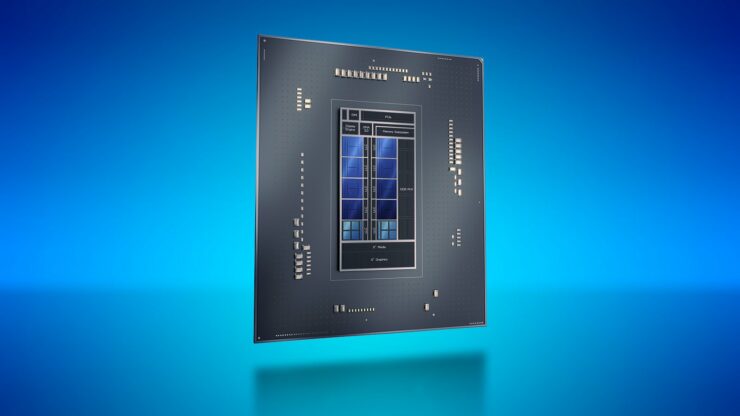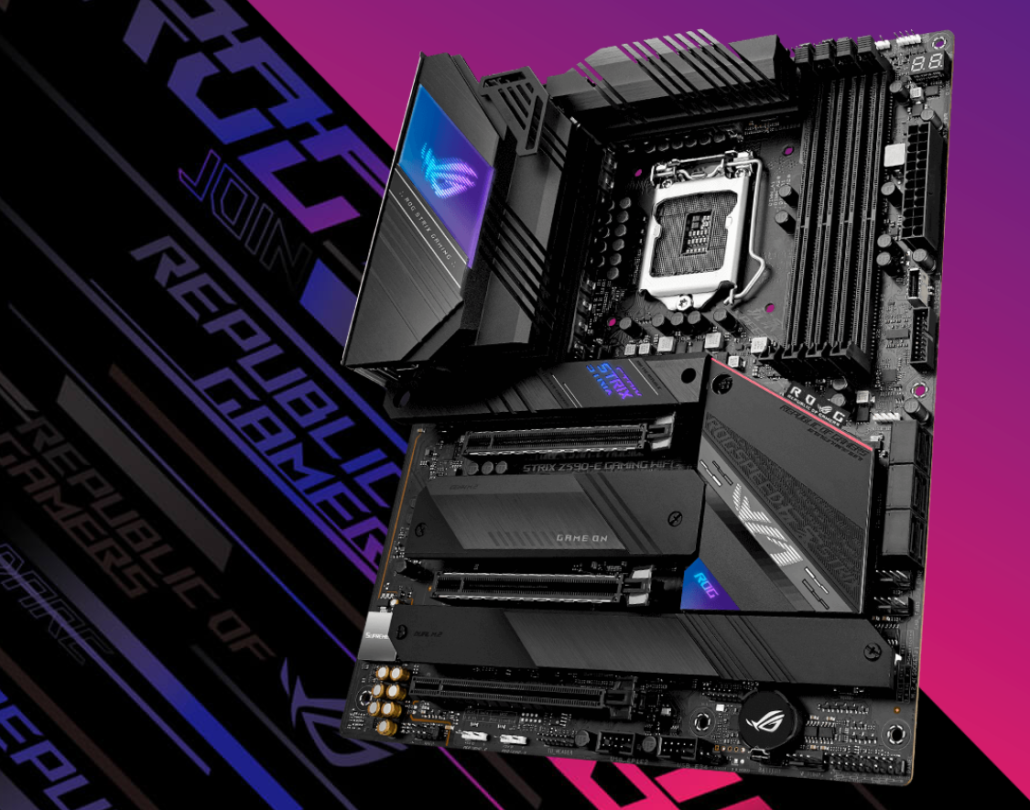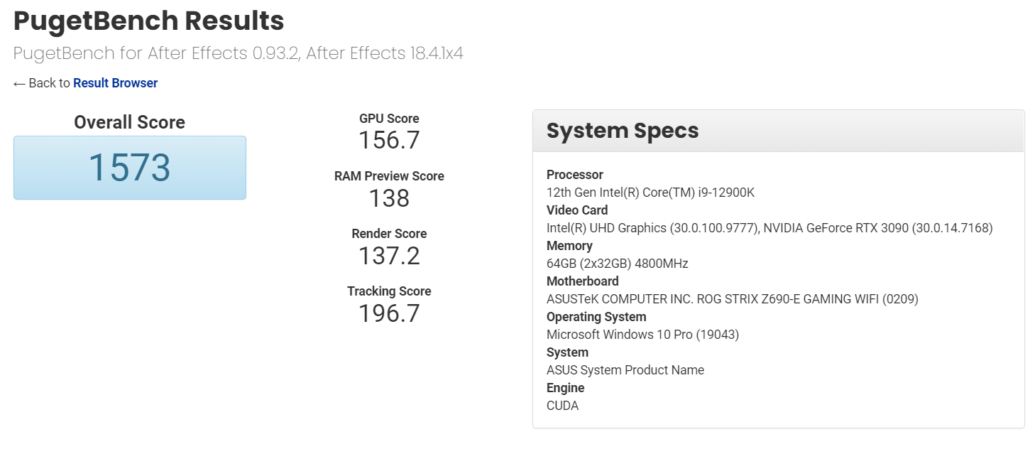A brand new benchmark of Intel’s Core i9-12900K Alder Lake-S Flagship Desktop CPU has popped up within the Puget System benchmark database along with the first entry of ASUS’s upcoming ROG STRIX Z690-E Gaming WIFI motherboard.
Intel Core i9-12900K Alder Lake CPU Benchmarked With ASUS ROG STRIX Z690-E Gaming WIFI Motherboard, Faster Than AMD Ryzen 9 5950X And i9-11900K
Two entries for the Intel Core i9-12900K Desktop CPU were made within the Puget Systems data-base. Based on the new benchmarks, this chip looks to be a qualification sample with much higher clock speeds than what we have seen on early engineering samples. The CPU was tested on ASUS’s ROG STRIX Z690-E Gaming WIFI motherboard which is part of the next-gen ROG lineup & this entry seems to be made by accident by someone at ASUS’s HQ. The test setup was running 64 GB DDR5-4800 (2 x 32 GB) memory and an NVIDIA GeForce RTX 3090 graphics card on the Windows 10 OS.
Coming straight to the performance numbers, the Intel Core i9-12900K scored 1575 points which put it ahead of the Core i9-11900K in the same benchmark. The AMD Ryzen 9 5950X scores an overall 1581 points whereas the Intel Core i9-11900K scores 1548 points. The Intel Core i9-11900K is an 8 core chip whereas the AMD Ryzen 9 5950X features 16 cores which means this benchmark (After Effects 0.93.2) isn’t really optimized for high-core count processors. But this is the 2nd leaked benchmark that shows the Core i9-12900K sitting ahead of the Ryzen 9 5950X.
Despite all, the Core i9-12900K coming close to the Core i9-11900K and Ryzen 9 5950X in its current state is a big feat. We have to remember that Alder Lake CPUs, even in QS state, won’t deliver full performance capability until they receive proper BIOS and OS support. We have previously seen this with Intel’s Rocket Lake chips which didn’t receive proper BIOS support till a few days prior to their launch. Furthermore, Intel’s Alder Lake CPUs are based on a hybrid architecture & will require extensive updates through Windows 11 to fully unlock their performance and multi-threaded core potential.
A crucial element to this was announced by Intel during its Architecture Day 2021 & is known as ‘Thread Director’. It is a hardware-based scheduler that finally has visibility into the type of threads being scheduled. The technology would first be available in Alder Lake CPUs where it will work with Windows 11 to prioritize tasks to the various cores based on their nature. For the first time, a hardware scheduler can send background tasks to the small cores and performance-requiring tasks to the performance cores.
Intel Core i9-12900K 16 Core / 24 Thread Desktop CPU
The Intel Core i9-12900K will be the flagship chip in the 12th Gen Alder Lake Desktop CPU lineup. It will feature 8 Golden Cove cores and 8 Gracemont cores for a total of 16 cores (8+8) and 24 threads (16+8). The P-cores (Golden Cove) will operate at a maximum boost frequency of up to 5.3 GHz with 1-2 active cores and 5.0 GHz with all-cores active while the E-cores (Gracemont) will operate at 3.90 GHz across 1-4 cores and up to 3.7 GHz when all cores are loaded. The CPU will feature 30 MB of L3 cache and TDP values are maintained at 125W (PL1) and 228W (PL2).
Intel 12th Gen Alder Lake Desktop CPU Specs “Rumored”
| CPU Name | P-Core Count | E-Core Count | Total Core / Thread | P-Core Base / Boost (Max) | P-Core Boost (All-Core) | E-Core Base / Boost | E-Core Boost (All-Core) | Cache | TDP | Price |
|---|---|---|---|---|---|---|---|---|---|---|
| Intel Core i9-12900K | 8 | 8 | 16 / 24 | TBA / 5.3 GHz | 5.0 GHz (All Core) | TBA / 3.9 GHz | 3.7 GHz (All Core) | 30 MB | 125W (PL1) 228W (PL2) |
TBA |
| Intel Core i7-12700K | 8 | 4 | 16 / 20 | TBA / 5.0 GHz | 4.7 GHz (All Core) | TBA / 3.8 GHz | 3.6 GHz (All Core) | 25 MB | 125W (PL1) 228W (PL2) |
TBA |
| Intel Core i5-12600K | 6 | 4 | 12 / 16 | TBA / 4.9 GHz | 4.5 GHz (All Core) | TBA / 3.6 GHz | 3.4 GHz (All Core) | 20 MB | 125W (PL1) 228W (PL2) |
TBA |
The Intel Alder Lake Desktop CPUs are expected to launch in Q4 2021 and will be the first mainstream consumer platform to utilize PCIe5.0 and DDR5 technologies along with a new hybrid architecture approach, something that Microsoft has optimized for its Windows 11 operating system.
News Source: Benchleaks




